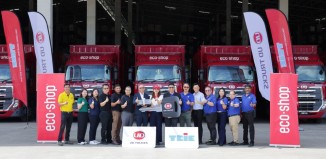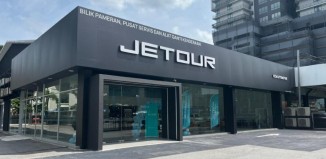16% Growth in Vehicle Sales in 2001
As widely expected, motor vehicle sales in Malaysia for 2001 were impressive and unaffected by the effects of September 11. According to the Malaysian Automotive Association (MAA) which compiles market data, the total industry volume recorded was 396,381 units, a 16% increase over 2000’s 343,173 units. However, it should be noted that this figure does not include sales of some makes as their distributors are not MAA members and do not submit their sales information. In particular, the Korean makes would have sold in a significant number and pushed the actual TIV past 400,000 units. The 2001 TIV is the second highest ever in the history of the local auto industry, the highest being 404,837 units in 1997.
Proton and Perodua topped the chart and accounted for 320,048 units and took 80.8% market share. Toyota, with 22,771 units sold occupied third position while Nissan was fourth with 16,043 units. Ford finished the year in fifth place with 6,949 units sold.
A surprising surge in sales in 2001 saw Mitsubishi overtake Honda for the first time to take overall sixth position with 5,419 units sold. This volume was for the commercial and 4×4 vehicles sold by USF and not the passenger car models sold by Cycle & Carriage Malaysia. The impressive performance was clearly helped by the Mitsubishi Storm pick-up which made its debut at the beginning of 2001.
Among the European makes, Mercedes-Benz was tops with 2,693 units (of which 2,448 units were cars) while BMW was just behind with 2,011 units and Volvo was third with 1,503 units.
PASSENGER CARS
As always, passenger car (PC) sales accounted for the largest number of vehicles sold; in 2001, the PC share was 83% of the TIV. Within this segment, national makes Proton and Perodua accounted for 93% of sales or 303,222 units. The national makes’ share was the same in 2000.
Between Proton and Perodua, Proton sales totaled 208,746 units, a significant increase from the 178,960 units sold in 2000. Perodua’s sales rose to 94,476 units from 82,484 units but its share in the PC segment remained the same as in 2000.
Among the non-national makes, Toyota again emerged as the best-selling make with 5,801 units sold. However, its PC volume was actually lower than second-placed Nissan which sold 7,077 units and grabbed a share of 2.2%, 0.4% more than Toyota. Honda was third best in PC sales with 4,165 units, the uncharacteristic performance attributed to the change in distributors and some network issues.
COMMERCIAL VEHICLES
The commercial vehicle sector had the same TIV share of 10% as in 2000 with 37,623 units sold. The increase in volume was about 4,000 units and this limited growth reflected the economic conditions of last year. Another factor which inhibits greater sales, particularly in the heavy vehicle segment, is the requirement for licences by operators and there is a quota set for this. According to an industry source, there are some companies that need a large fleet of big trucks but are prevented from buying them for use because they cannot get the licences or have to wait many months for approval.
4×4 VEHICLES
Though 4×4 sales were 31,311 units and 3,993 units more than that sold in 2000, the segment still accounted for only 8% of the TIV. 44% of the 4×4 sales were of the Perodua Kembara alone.
PRODUCTION
Output from the plants for 2001 totaled 428,701 units, a 19% increase over 2000’s 360,105 units. Production of national makes increased by 20% while that for non-national makes grew 16%, a less stellar movement than the 50% growth the non-national makes recorded between 1999 and 2000.
LOOKING AHEAD
The MAA does not expect 2002 sales to grow as significantly as 2001 but is still nevertheless forecasting moderate growth of 3% in TIV to 410,000 units. The biggest growth is still expected to be in the PC segment (4%) while commercial vehicles and 4x4s are expected to increase by 1% and 2%, respectively.
MAA President Aishah Ahmad said that the growth forecast is based on continued government initiatives to encourage consumer spending, ease of buying new vehicles with low interest rates and downpayment terms, aggressive promotional activities by various companies, bonuses and wage hikes for the government employees and additional financing packages for teachers. Additionally, improved economic growth is expected in the second half of the year.
“It’s a good time to buy a new vehicle,” she said. “There are many promotions and vehicles are quite affordable at this time and we hope that Malaysians will not be hesitant about spending money on changing their cars or getting new ones.”
NB: Due to unauthorised copying of our data charts by certain parties, we are not publishing the sales figures by make and segment at this time. However, e-mailed copies are available free of charge upon request. Please send your request to chips@autoworld.com.my .

























